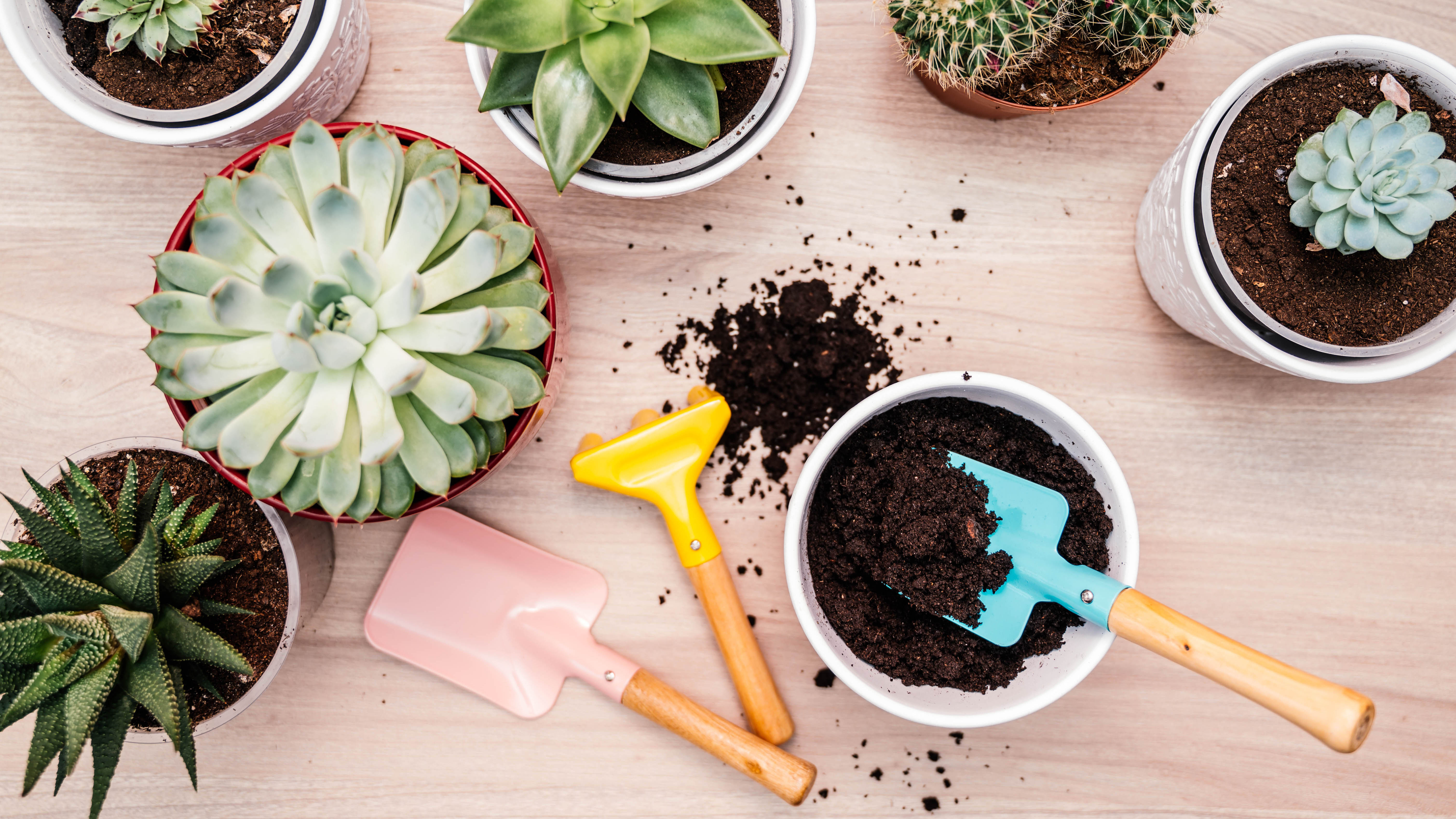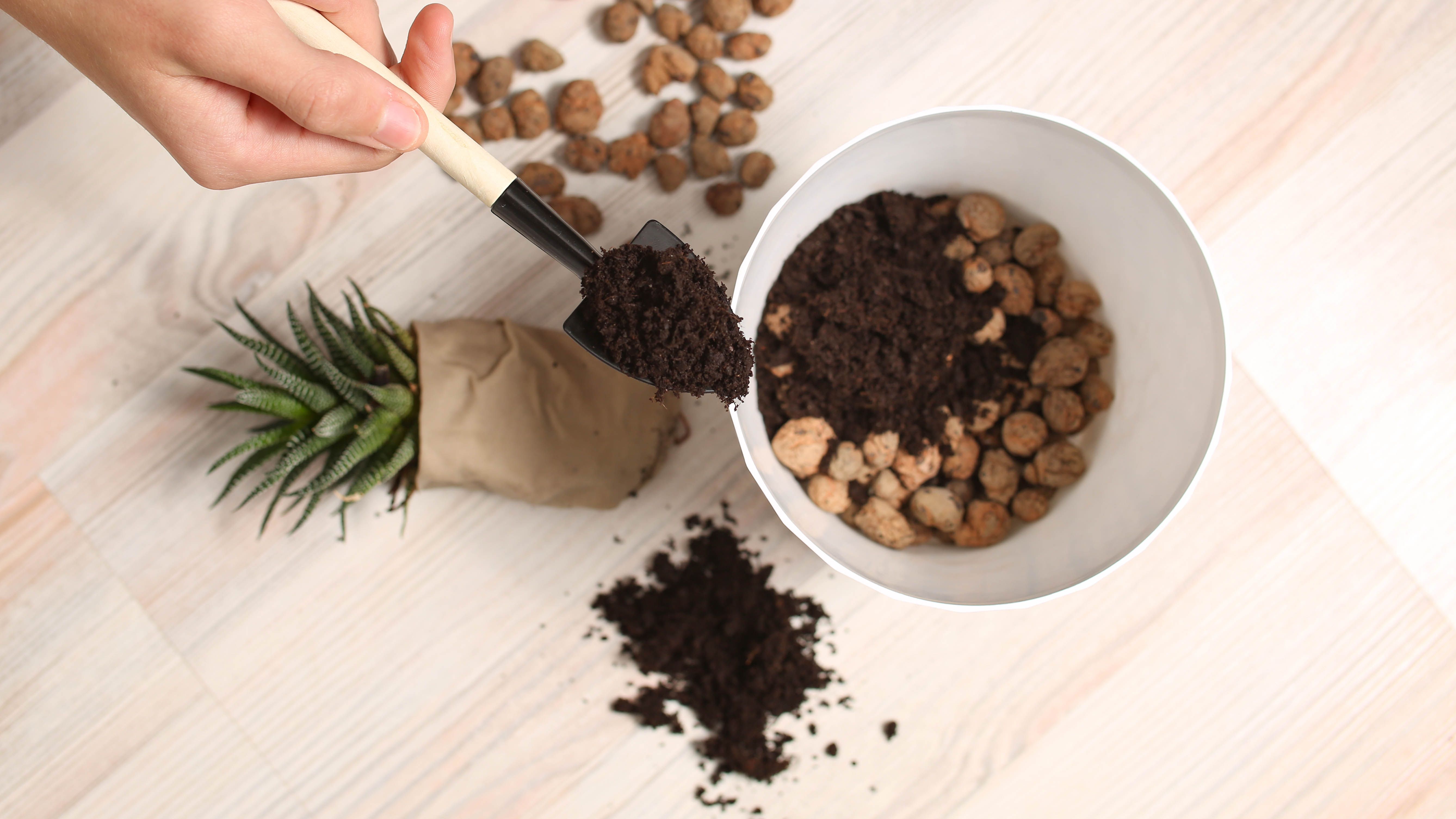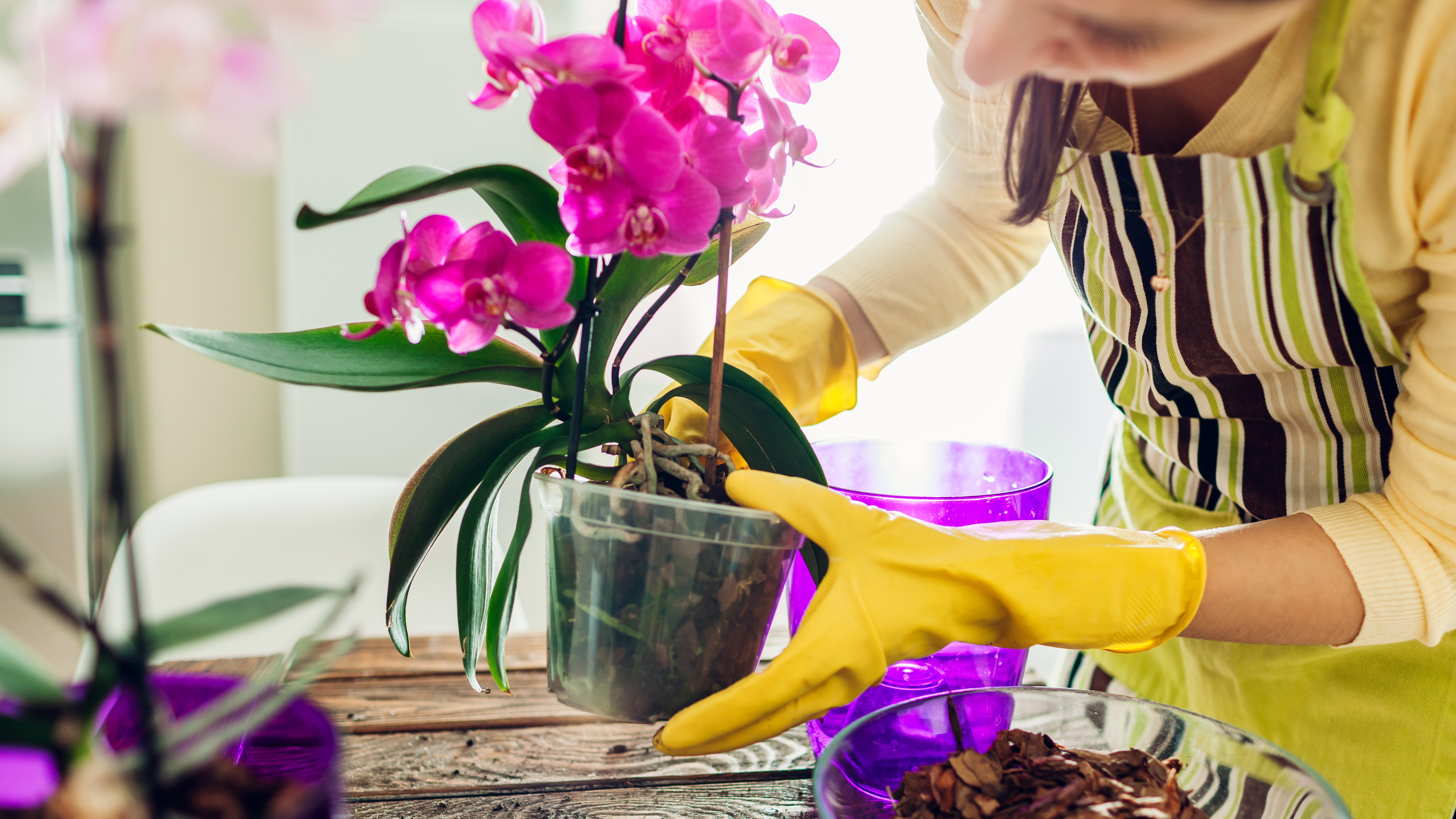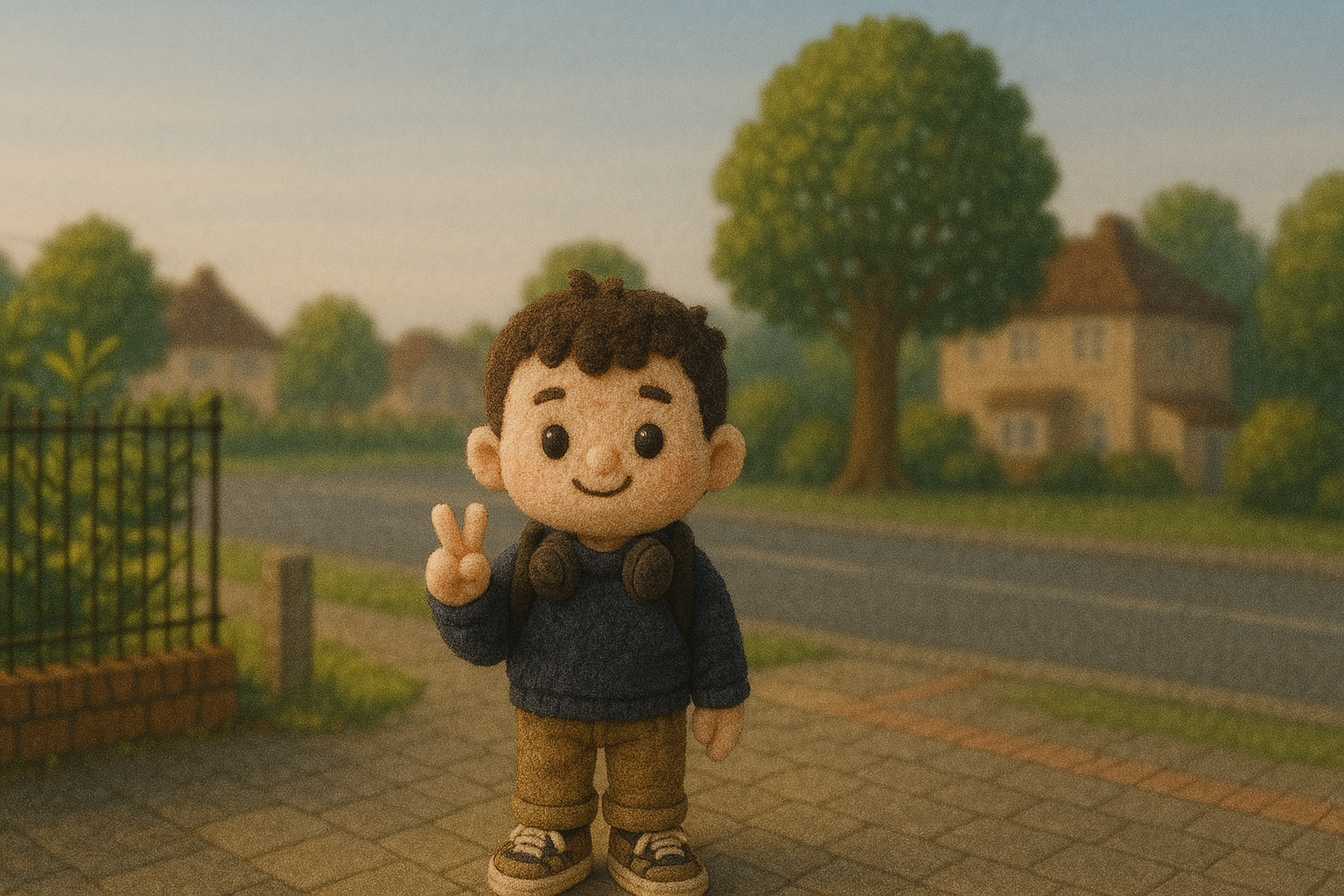9 mistakes you make when repotting a plant
Are you making any of these repotting mistakes?

Houseplants are a great way to bring the outdoors in, and can really spruce up your home. But if you struggle to keep them alive, (despite your best efforts!), you might be making these mistakes when repotting a plant.
Repotting a plant might seem simple enough, however, one mistake could ‘shock’ your plant, and potentially kill it. As the name suggests, transplant shock occurs when a plant shows signs of distress, after being uprooted and transferred into a new pot. Typical signs to look out for include yellowing or falling leaves, wilting, root damage and if there is clearly no new growth.
That’s why it’s important to know how to repot a plant the right way, to ensure it has a long and healthy life. What’s more, you want to avoid the process of saving a dying plant before it’s too late!
So, if you want happy and healthy houseplants, avoid these 9 common mistakes when repotting a plant.
If you don't want to get your hands dirty, here are 7 houseplants you can grow without soil. Just be sure not to make these 7 mistakes that can kill houseplants.
1. Choosing the wrong soil

While it might be tempting to use the same soil for the garden, never use this to repot houseplants. Using the wrong soil can cause the spread of fungal or bacteria growth that could affect your plants, and cause them to die.
Instead, always use a good quality potting soil or compost for houseplants. Unlike gardening soil, potting soil or compost contains the nutrients needed to make your plant thrive. What’s more, the mixture of ingredients like peat moss, and pine bark are ideal for retaining moisture. Perlite in particular is best for houseplants, as it allows for easier drainage, and also reduces the risk of waterlogging and root rot.
Sign up to get the BEST of Tom's Guide direct to your inbox.
Get instant access to breaking news, the hottest reviews, great deals and helpful tips.
2. Using the wrong-sized pot

Another common repotting mistake is transferring your plant into an oversized pot. While some might think a bigger pot would be sufficient space for the plant to grow faster, this will actually cause certain plants to grow slower.
There is also a risk of overwatering, and once the excess soil holds onto too much water, the roots become weak and vulnerable to rot. Experts always recommend using a pot around 2-4 inches larger in diameter, and 1 to 2 inches deeper than the plant's current pot.
Generally, the best pot materials are clay, terracotta or ceramic pots, which allow more oxygen. While plastic is non-porous, and tends to reduce the amount of oxygen or moisture getting to the plant.
3. Pot without drainage holes

Once we have our beautiful pots, we often forget about putting drainage holes at the bottom. These holes are essential to allow proper water drainage from the soil, encourage good air circulation, and also flush salts from the soil.
If your pot doesn’t come with holes, simply drill a few at the base of the container. Then, place the pot on a drip tray to collect any excess water. Just be sure to empty it after watering so it doesn’t sit in it for too long.
Other ways for improving drainage is to place a layer of rocks or pebbles on the base of the pot, before adding your soil. Again, this will absorb excess water until the plant draws it up from the roots.
4. Overwatering plants

We might think plenty of water is necessary for houseplants to survive, but this can do the opposite. And if you’re wondering why your plants are suddenly wilting, despite giving it water, this could be the reason why.
Soggy soil can limit airflow around the roots, encouraging fungal growth and bacteria that could lead to root rot, and effectively kill your plant. As a general rule of thumb, never overwater when the top layer of soil is still moist. You can either test the lower levels of the soil with your finger to determine moisture levels, or invest in a soil moisture meter like this XLUX Soil Moisture Sensor Meter ($14, Amazon).
In any case, always check the plant care labels for guidance on how often to water them.
5. ...or underwatering plants

Similarly, not watering enough, or only watering when it shows signs of wilting is another mistake. If your plant doesn’t get sufficient water, it won’t have all the elements needed for healthy growth. What’s more, once the soil is left dry for long periods, this will eventually become compacted — making it harder for water to reach the roots properly. In addition, wilting plants will definitely benefit from water however, once they’re showing signs of shock, you might have waited too late.
In extreme cases, experts suggest watering from the bottom, to allow the soil to fully soak up as much moisture as possible. This also ensures the roots are completely saturated, without any dry areas.
6. Confusing ‘low light’ with ‘no light’

Just because a plant is classified as ‘low light’, doesn’t mean it can survive without any light at all. Plants still need a good amount of light to grow and thrive, and if placed in a dark room or corner, it’s very likely your houseplants will die.
Aim to move such plants to a brighter spot in the room, and away from direct light. As a general rule of thumb, low light plants require at least 1000 lux of light (100 foot-candles), on a standard day. This is sufficient light to keep them healthy, and last longer.
7. Plants placed in direct sun

Similarly, leaving houseplants in midday, direct sunlight is a common repotting mistake. While most plants can handle an hour or two of direct sunlight, once left for hours in midday or afternoon sun, this can cause irreparable damage to the leaves.
Instead, leave plants in the gentle early morning sun to get sufficient light, but for no more than two hours. During summer months, when the weather is intense, it’s best to move them away from sunlight altogether.
8. Overfertilizing plants

Fertilizer is another essential part of plant care. And while many people assume that applying more will equate to faster growth, this isn’t the case.
In fact, too much fertilizer could end up burning the plant rather than making it grow, caused by the additional salts in the soil. It’s always recommended to apply fertilizer sparingly, and according to the care instructions on the package. Experts also suggest applying fertilizer at half strength if your plants are healthy and doing well, and full dose only when they need a boost.
9. Repotting too soon

Not every plant needs repotting, and it’s important to avoid repotting too soon. If you repot a plant when it’s not necessary, this will literally shock the plant, causing it to wilt or die.
Usually, the first sign of repotting is when you see the roots growing through the drainage holes, or pushing the plant upwards — almost out of your pot. Other signs that your plant may need reporting include wilting and stunted growth. So if you notice your plant growing much slower than normal, it may be time to get repotting!
More from Tom's Guide
Before you get started, you'll need one of the best gardening gloves to make repotting easier.
If you want more houseplant tips, check out how to repot succulents, how to care for a spider plant, or how to care for an orchid and make it thrive all year long. Plus, these 5 houseplants will help prevent mold in your home.
Or if you have artificial plants, check out these 7 ways to make fake plants look more real.

As the Homes Content Editor, Cynthia Lawrence covers all things homes, interior decorating, and garden-related. She has a wealth of editorial experience testing the latest, ‘must-have’ home appliances, writing buying guides and the handy ‘how to’ features.
Her work has been published in various titles including, T3, Top Ten Reviews, Ideal Home, Real Homes, Livingetc. and House Beautiful, amongst many.
With a rather unhealthy obsession for all things homes and interiors, she also has an interior design blog for style inspiration and savvy storage solutions (get rid of that clutter!). When she’s not testing cool products, she’ll be searching online for more decor ideas to spruce up her family home or looking for a great bargain!
